Over the past year thousands of Bhutanese refugees in Nepal have resettled in third countries – mainly the USA – but many others, especially the elderly, hope only for repatriation to Bhutan.

Like many elderly Bhutanese refugees in Nepal, 96-year-old Pahalman Bhattarai wants to return to his homeland(Photo: Naresh Newar/IRIN)
Pahalman Bhattarai, aged 96, is Nepal’s oldest Bhutanese refugee. “I’m getting old. My dying wish is to return to my home in Bhutan,” he told IRIN at the Beldangi refugee camp in Nepal’s southeastern Jhapa District.
Like many elderly Bhutanese refugees, Bhattarai has little desire to live in either the USA or the other six countries (Australia, New Zealand, Netherlands, Norway, Denmark and Canada) involved in a third country resettlement programme now being led by the UN Refugee Agency (UNHCR) and the International Organization for Migration (IOM).
“I am 82 years old now. I don’t think I will live long enough to start a new life in a Western country. I would rather die in my own country,” said Layan Bahadur Thapa, another refugee, despite having many relatives and former neighbours already in the USA and Canada.
According to UNHCR, over 15,000 Bhutanese refugees have resettled in the past 14 months, with more expected in the coming months.
Of these, 14,050 have resettled in the USA, 781 in Australia, 377 in Canada, 271 in New Zealand, 164 in Norway, 161 in Denmark and 120 in the Netherlands
According to UNHCR, there are close to 95,000 Bhutanese citizens of Nepali origin – also known as ‘Lhotsampas’ – still living in seven refugee camps in southeastern Nepal. Some 70,994 have declared an interest in resettlement.
“We have over 15,000 who have left in such a short period and that is rather unusual and is a good story to tell,” UNHCR representative in Nepal Daisy Dell told IRIN in Kathmandu.
But there are sad stories, too: “My parents were buried in Bhutan and we have hundreds of years of history rooted there. How can we just leave in vain like that?” asked 68-year-old Bir Bahadur Adhikari.
The first refugee camp was set up in 1990 after thousands of `Lhotsampas’ fled the country fearing for their lives after the Bhutanese government introduced new citizenship rules disenfranchizing many ethnic Nepalis who had been living in the country since the 19th century, according to UNHCR.
The Bhutanese government says the refugees are migrants and have no right to live in Bhutan.
Camp numbers have increased more than tenfold in the past 19 years, as 15 rounds of talks between Nepal and Bhutan failed to resolve the issue, according to the refugees and media reports.
Photo: David Swanson/IRIN
Young Bhutanese boys outside Nepal’s Khundunabari refugee camp in southeastern Jhapa District. There are close to 95,000 Bhutanese refugees in the Himalayan nation
New repatriation campaign
Over the past few months, a newly formed Senior Citizens Group has been leading a campaign for repatriation and has set up a registration process for those wanting to be repatriated. More than 8,000 refugees have filled in an application form so far, according to the group’s leaders.
“After we get all the applications, we will take a huge delegation to the UN and appeal to officials to open up more doors for repatriation to Bhutan,” Harka Jung Subba, an activist told IRIN in Damak.
He said UNHCR was aware of the campaign – and the group’s warning that the refugees would never leave the camp until UNHCR assisted them to repatriate to Bhutan.
“Pressure from the UN and international community to find a solution has been ongoing to resume bilateral talks between Bhutan and Nepal and come to some kind of positive resolution,” UNHCR’s Dell said, adding that the agency would continue its assistance to the refugee population until their problems were resolved.
“UNHCR believes in multiple solutions and not just one, but the situation now is that there is one such solution available and that is resettlement,” she said. According to UNHCR, there are close to 95,000 Bhutanese citizens of Nepali origin – also known as ‘Lhotsampas’ – still living in seven refugee camps in southeastern Nepal. Some 70,994 have declared an interest in resettlement.
“We have over 15,000 who have left in such a short period and that is rather unusual and is a good story to tell,” UNHCR representative in Nepal Daisy Dell told IRIN in Kathmandu.
But there are sad stories, too: “My parents were buried in Bhutan and we have hundreds of years of history rooted there. How can we just leave in vain like that?” asked 68-year-old Bir Bahadur Adhikari.
The first refugee camp was set up in 1990 after thousands of `Lhotsampas’ fled the country fearing for their lives after the Bhutanese government introduced new citizenship rules disenfranchizing many ethnic Nepalis who had been living in the country since the 19th century, according to UNHCR.
The Bhutanese government says the refugees are migrants and have no right to live in Bhutan.
Camp numbers have increased more than tenfold in the past 19 years, as 15 rounds of talks between Nepal and Bhutan failed to resolve the issue, according to the refugees and media reports.
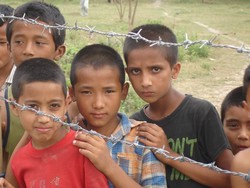
Young Bhutanese boys outside Nepal’s Khundunabari refugee camp in southeastern Jhapa District. There are close to 95,000 Bhutanese refugees in the Himalayan nation.(Photo: David Swanson/IRIN)
Over the past few months, a newly formed Senior Citizens Group has been leading a campaign for repatriation and has set up a registration process for those wanting to be repatriated. More than 8,000 refugees have filled in an application form so far, according to the group’s leaders.
“After we get all the applications, we will take a huge delegation to the UN and appeal to officials to open up more doors for repatriation to Bhutan,” Harka Jung Subba, an activist told IRIN in Damak.
He said UNHCR was aware of the campaign – and the group’s warning that the refugees would never leave the camp until UNHCR assisted them to repatriate to Bhutan.
“Pressure from the UN and international community to find a solution has been ongoing to resume bilateral talks between Bhutan and Nepal and come to some kind of positive resolution,” UNHCR’s Dell said, adding that the agency would continue its assistance to the refugee population until their problems were resolved.
“UNHCR believes in multiple solutions and not just one, but the situation now is that there is one such solution available and that is resettlement,” she said. (source:irinnews.org)
Filed under: blogs news | Tagged: bhutan and refugee america |





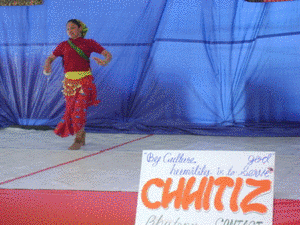
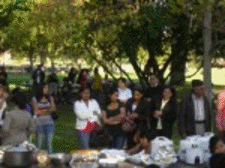
![[gickr.com]_938aef9b-3dba-fad4-4951-fcd10064bc4f](https://prakass.files.wordpress.com/2010/03/gickr-com_938aef9b-3dba-fad4-4951-fcd10064bc4f.gif)
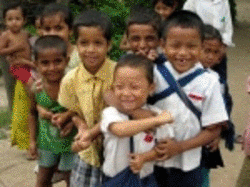
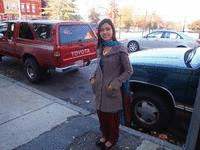
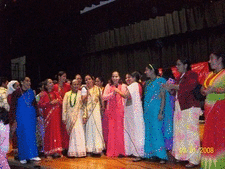

Leave a comment